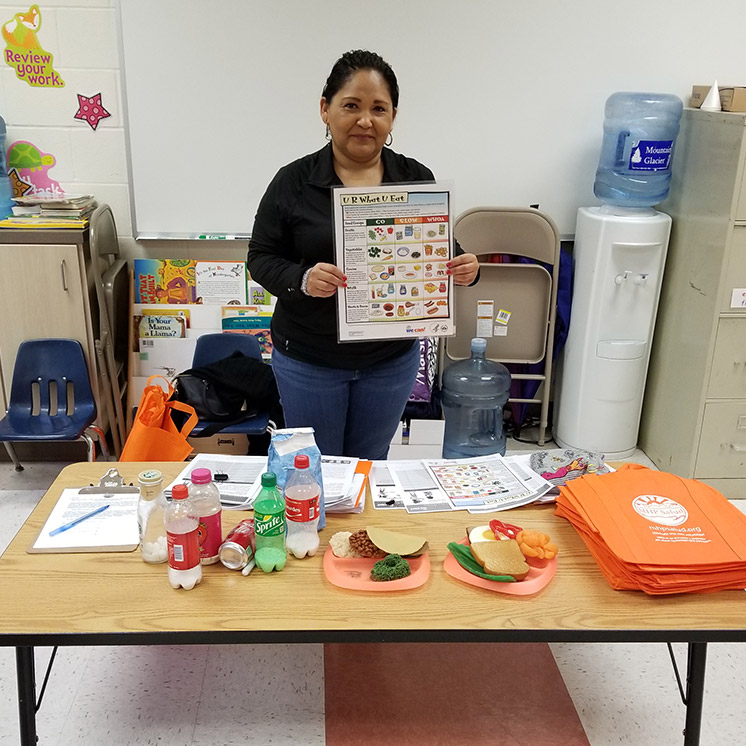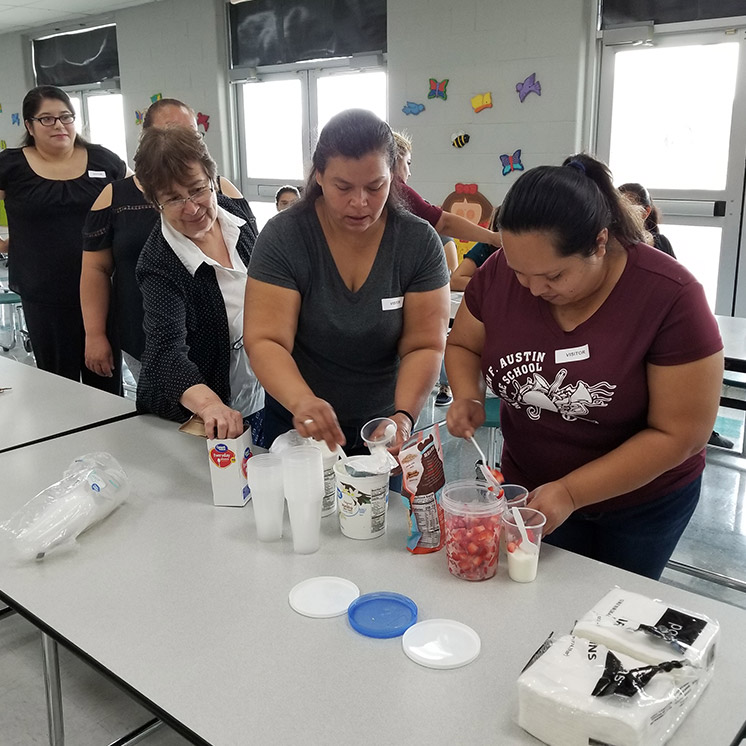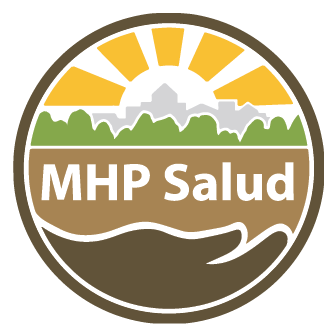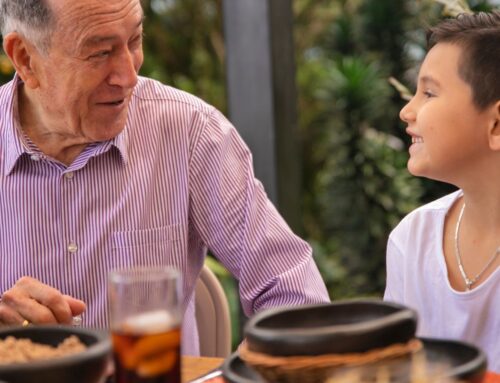Adding Better Nutrition to Cultural Dishes Doesn’t Have to be a Challenge (CHWs Know How)
April 2020
Community Health Workers in our healthy living initiative programs are helping Hispanic families change the way they approach food by providing essential education around nutrition that teaches them how to build healthier meals with the foods they know and love. Having knowledge around nutrition that is readily available is an important tool that has the potential to improve dietary habits and reduce the risk of chronic disease throughout a person’s life.1 But in many of the predominantly Spanish-speaking communities we serve, finding nutritional information that has been adapted to align with their language and culture can be challenging.
Community Health Workers, who serve as liaisons between the communities they live in and health care professionals, are perfectly situated to help because they can bring relevant health information directly into the places where community members live, work, learn, and worship. CHWs speak the language and understand the culture, giving them the ability to interpret information and accurately help their fellow community members apply it to their everyday lives. This help is crucial to the work we do to help improve health outcomes and lessen the high prevalence of childhood obesity and diabetes in Hispanic communities.
- According to the Centers for Disease Control, childhood obesity prevalence in Hispanic communities is 25.8% compared to 22% for non-Hispanic blacks, 14.1 % non-Hispanic whites, and 11% non-Hispanic Asians.2
- Further, if you’re a Hispanic adult, your chance of developing type 2 diabetes is more than 50%, and you’re likely to develop it at a younger age.3
A CHWs connection to the culture of the communities they serve makes them passionate about recruiting families to participate in free group health education classes. Our healthy living initiative programs serve thousands of individuals due to the tireless outreach efforts of CHWs at schools, community centers, and going door-to-door. During the 6-week programs, CHWs provide information, present live demonstrations, role-play common scenarios, lead low-impact workout routines, and offer free tools all centered around nutrition and healthy eating habits.
What’s most exciting about these programs is that they’re effective. In 2019, CHWs were able to educate and empower nearly 3,000 participants to adopt better daily healthy living habits at home. For example, data collected from exit surveys showed adults in our Juntos Podemos program increased their fruit and vegetable consumption by nearly 30%. Children in the program increased their vegetable consumption by an astounding 65%. Further, participants across all of our healthy living initiative programs were able to adopt the workout routines they learned from CHWs to increase the amount of time they spent exercising at home.
Activities that Build Healthy Habits and Healthy Plates
One prominent component of our healthy initiative programs is to focus on teaching participants the skills that will allow them to make nutritious meals using foods that are both available and identifiable to them. To do this, CHWs tackle a variety of issues ranging from how to read and interpret nutrition labels to measuring out portion sizes.

Juntos Podemos provides culturally and linguistically-appropriate education on healthy nutrition and leading an active lifestyle for Latino parents and caregivers of children 8 to 13 years of age who qualify to receive Supplemental Nutrition Assistance Program (SNAP) benefits or other Federal Assistance programs.

CHWs in our Vivir una Vida Plena (Living a Fulfilling Life) program promote the adoption of healthy lifestyles among individuals at high risk for or diagnosed with the early stages of chronic diabetic kidney disease (CDKD). The program provides education, support, skill building, and linkage to our clinical partners for lab screenings to help participants manage the disease.
CHWs also review health literature made specifically with the Hispanic community in mind, like our Healthy Plate Brochure, Sabor y Salud. The brochure explains the different food groups and how these groups should be prepared to make well-balanced nutritional meals. To apply this information, CHWs distribute plastic plates that are sectioned to represent appropriate portion sizes to each participant. Each section is filled with information and pictures of the food groups that should be placed there. Participants are then asked to build a well-balanced healthy plate using plastic models designed to look like foods they’re accustomed to.
This activity is unique in that it teaches individuals how to make healthy choices even when their food options are limited. The reality of many of the communities here is that residents have little access to fresh and healthy foods. Known as food deserts, these communities lack the presence of large grocery stores and have limited or unreliable public transportation to get to grocery stores outside of their community. Teaching them how to recognize the nutritional value of the food items that are accessible plays a vital role in their ability to prepare healthy meals.
Another creative way CHWs help families merge nutrition and their cultural dishes is by preparing the meals with them. As CHWs often hold their educational sessions in community centers, schools and at participant’s homes, kitchens are regularly available. This allows the CHWs to engage participants in cooking demonstrations on site. Together, they peel and chop vegetables, learn how to prepare proteins, and even taste-test the meals after they are done. This demonstration assures participants that their cultural dishes can be prepared in a nutritious way and the confidence to do so on their own.
CHW Programs Use a Family-centered Approach and are Uniquely Flexible
Perhaps what makes our health living initiative programs most valuable is that they are designed to include the entire family. Poor dietary habits are often carried over from childhood to adulthood.4 Having the ability to provide this education that connects children to their culture, coupled with a child’s school nutrition program can propel them to make healthier food choices throughout the entirety of their lives. And the inclusion of parents and grandparents only assures that these skills are reinforced at home.
Along with being family-centered, our CHWs programs are flexible during emergency situations. Whether it be a hurricane or the outbreak of a national pandemic, CHWs know what methods they can utilize to get information into their communities. Most recently, to address the recent COVID-19 outbreak, our CHWs have ramped up phone and online support showing further evidence that the CHW programs can be adapted for any situation.
This brochure, created by MHP Salud and Hebni Nutrition Consultants, Inc., was designed to help Hispanic and Latino Communities build nutritious plates with familiar fresh foods. Inside you will find information on portion sizes, nutrition facts, and tips to help individuals adopt healthier eating habits. It is available for immediate download after registration to our resource portfolio. Sign up for free!
These activities are just a part of the work CHWs do to increase health outcomes in Hispanic communities. To learn more about our healthy living initiative programs, visit our Community Health Worker Programs page.
About MHP Salud
MHP Salud has over thirty years of experience implementing CHW programs and training organizations looking to start and/or strengthen their own CHW programs. For more information about MHP Salud, our services, and how we can help you, please email us at info@mhpsalud.org
References
- Community-Based Strategies for Improving Latino Health https://www.policylink.org/sites/default/files/COMM-BASEDSTRATEGIES-LATINOHEALTH_FINAL.PDF
- Centers for Disease Control, Childhood Obesity Facts https://www.cdc.gov/obesity/data/childhood.html
- Centers for Disease Control, Hispanic/Latino Americans and Type 2 Diabetes https://www.cdc.gov/diabetes/library/features/hispanic-diabetes.html
- Centers for Disease Control, Building Our Understanding: Culture Insights Communicating with Hispanic/Latinos https://www.cdc.gov/nccdphp/dch/programs/healthycommunitiesprogram/tools/pdf/hispanic_latinos_insight.pdf








